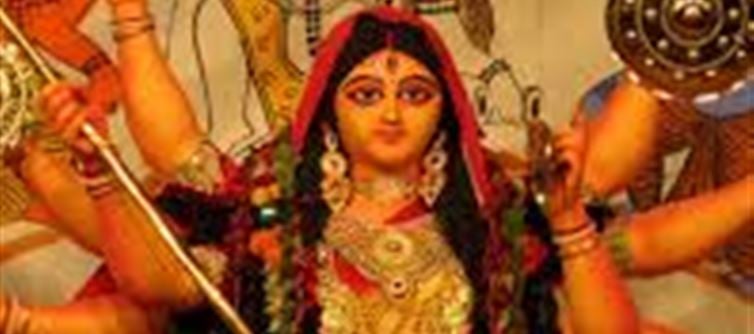
Durga Puja, one of the most significant festivals in India, is celebrated with great enthusiasm, especially in West Bengal. It is a time when families, communities, and pandals come together to honor Goddess Durga, symbolizing strength, power, and the triumph of good over evil. The festivities begin with the ritual of Kalparambha (also known as Akal Bodhon) on Shashti Tithi, which marks the official start of durga puja celebrations in the state.
What is Kalparambha?
Kalparambha is a special ritual that takes place on the sixth day of durga puja, Shashti (September 28, 2025), and it signifies the formal welcome of Goddess Durga to her earthly abode. The word “Kalparambha” translates to “commencement of auspicious time,” which is why the ritual is so important—it marks the beginning of the festival with the installation of the deity's idols in pandals.
Rituals of Kalparambha:
1. Kalash Sthapana (Placement of the Sacred Pot):
The ritual starts with the placement of a Kalash (a sacred pot filled with water) at the pandal or the home, symbolizing the welcoming of the goddess. The pot is usually decorated with mango leaves and a coconut placed on top. This is the focus of the puja (prayer), which begins the sacred invocation.
2. Bodhon (Awakening of the Goddess):
The first formal worship of Goddess Durga is performed on this day. The priest chants mantras to invoke the goddess into the idol. This ritual is known as Bodhon, which means the awakening or invocation of Goddess Durga. The goddess is believed to come down to bless her devotees with strength, peace, and prosperity.
3. Offerings of fruits and Flowers:
Devotees offer fruits, flowers, and sweets to Goddess Durga as a token of respect and devotion. Hymns and mantras are chanted to create a sacred atmosphere and invite blessings for the upcoming days of Durga Puja.
4. Lighting of Diyas (Lamps):
The lighting of diyas (oil lamps) is a key part of the ritual. The diyas symbolize the removal of darkness and the triumph of light over evil. These lamps are lit around the idol and in homes, adding a divine glow that enhances the festive spirit.
5. Setting the Stage for the Upcoming Days:
After Kalparambha, the atmosphere shifts from anticipation to celebration. The pandals are now ready to host devotees, and the air is filled with devotional songs, dances, and the scent of incense.
Why Kalparambha is Important:
Kalparambha is more than just a ritual—it's a spiritual initiation of the grand durga puja celebrations. This marks the beginning of the goddess’s annual stay in the mortal world, and people believe that she will bless them with peace, prosperity, and protection against evil forces. The festival, which will last for five days, culminates with Vijayadashami (Dussehra), celebrating Durga’s victory over the demon Mahishasura.
The Cultural Significance of Kalparambha:
Kalparambha holds immense cultural and religious significance in West Bengal and other parts of Eastern India. For Bengalis, it’s not just about worship; it’s a community affair where families come together, and the entire locality is engaged in the festivities. The beginning of the durga puja rituals marks a spiritual and emotional connection to Goddess Durga, symbolizing the purification of the self and the community.
Kalparambha in Modern Times:
While the core traditions of Kalparambha remain intact, the way it is celebrated has evolved over time. Many urban areas now see massive pandals with state-of-the-art lighting, sound systems, and elaborate themes, blending the traditional with modern sensibilities. But no matter how the rituals unfold, the essence of the Kalparambha ceremony remains the same—the start of the festive journey toward spiritual renewal and community bonding.
Conclusion:
Kalparambha marks the official commencement of Durga Puja in West bengal and other parts of India, setting the stage for an entire week of festivities filled with devotion, joy, and cultural celebrations. It is a time to reflect on the power of the divine feminine, as Goddess Durga prepares to bless the devotees with her protection and grace. As the entire region immerses itself in the celebrations, the festival serves as a reminder of the timeless struggle between good and evil, and the triumph of righteousness in all aspects of life.
Disclaimer:
The views and opinions expressed in this article are those of the author and do not necessarily reflect the official policy or position of any agency, organization, employer, or company. All information provided is for general informational purposes only. While every effort has been made to ensure accuracy, we make no representations or warranties of any kind, express or implied, about the completeness, reliability, or suitability of the information contained herein. Readers are advised to verify facts and seek professional advice where necessary. Any reliance placed on such information is strictly at the reader’s own risk..jpg)




 click and follow Indiaherald WhatsApp channel
click and follow Indiaherald WhatsApp channel